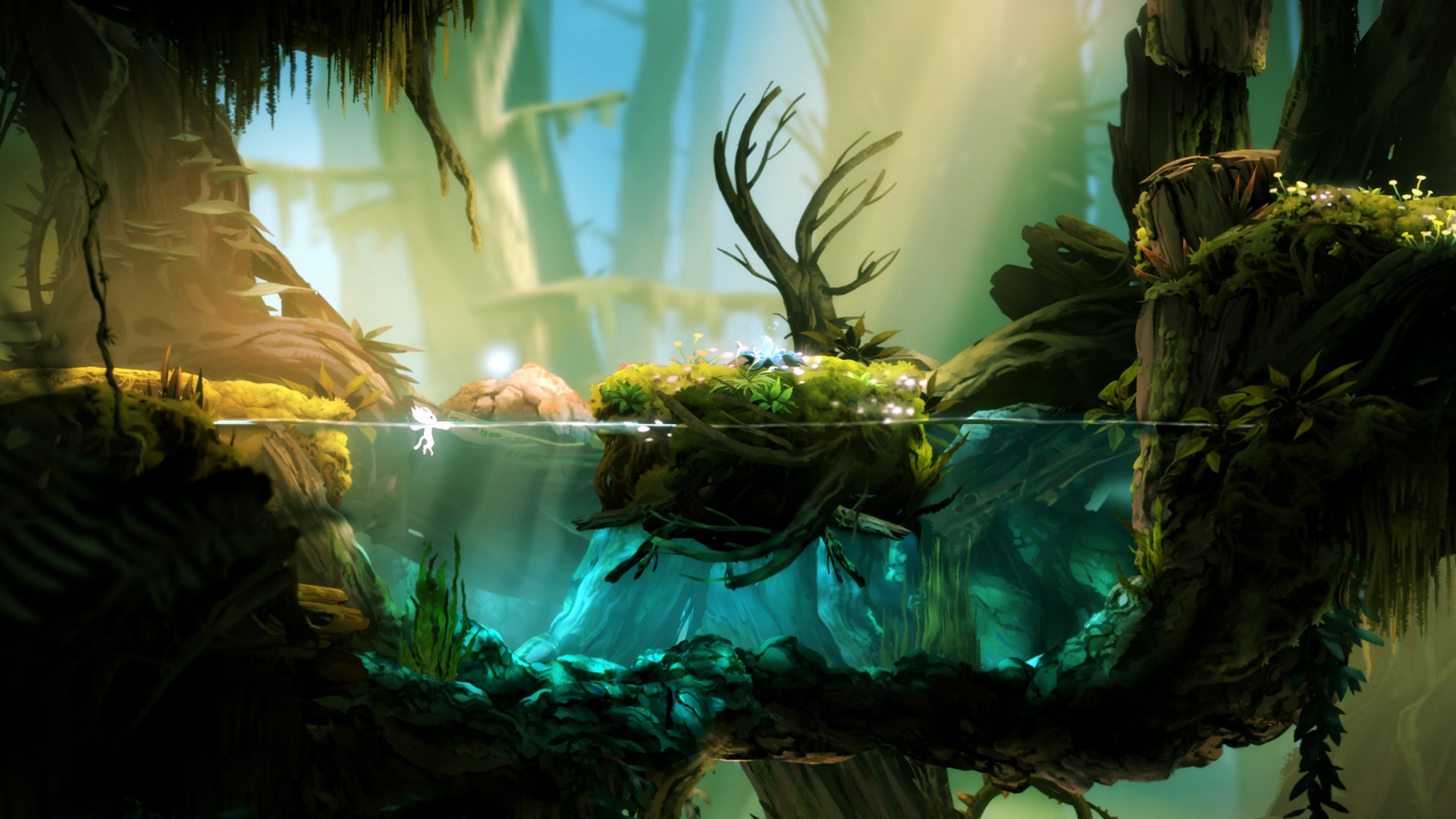Ori and the Blind Forest - Review
Ori and the Blind Forest feels like Nintendo’s second coming. Despite having no connection to the revered developer you can see Nintendo’s fingerprints everywhere in Ori, in a way that’s deeper than rudimentary inspiration or recreation. It’s a design philosophy, one which wraps around Ori and grants it a feeling of immense knowledge and cohesion. This may be Moon Studio’s first release, but it brings with it the passion and insight present in so many of the most beloved games ever released while simultaneously transcending them, feeling like the next step forward rather than a mere imitation.
Ori’s mechanical building blocks exist in a space that’s been exhaustively tapped and refined over the years (especially in the modern indie game industry), yet here take on a newfound innovation. It isn’t about “what” Ori is doing, so much as “how” is is executing it. There are countless precision and Metroid-like platformers now superficially working off almost the exact same routine as Ori, but what elevates Ori above them is its cohesion and forward thinking. It isn’t a collection of easily marketed parts assembled into a bizarre collage of styles and eras, but an astoundingly refined and unified vision that shares the same DNA as many of its peers but doesn’t allow that to define it.

The most impressive aspect of Ori is in how everything is working together toward the same goal. Level designs combine with a steady progression to create a sense of constant forward momentum; the presentation conjoins with Ori’s movements to feel alive and organic; ideas expand and elaborate on themselves as the difficulty scales to match, breaking at just the right moments to never hinder the pacing.
The level of skill with which Ori executes itself is remarkably precise and considered, even more so given its immense confidence which constantly reaffirms Moon Studios knows exactly what they’re doing. It’s not arrogant; it’s what allows Ori to so successfully advance beyond what has already been done.
One of the most surprising aspects of Ori to me is how despite utilizing many of Metroid’s (and maybe to an even bigger extent Zelda’s) progression systems, backtracking is almost nonexistent. You might pass through a repeated area here and there (or if you want to head back and pick up some stuff you missed), but there is almost always a reason for it which drastically alters how you now travel from A to B. Ori makes revisiting old areas engaging because it almost never feels like the same area anymore. Your abilities grow so quickly and steadily that by the time you return to a familiar spot you are now traversing it in a totally different way. This eliminated one of my biggest grievances with this style of game, in that so often they seem to start and stop as you travel between one area to the next, requiring you to retread old ground almost exactly as you already did once before. That never happens in Ori, which meant I was constantly engaged in what I was doing and how.

Where Ori had the biggest chance to fall apart was its difficulty, which is shockingly steep from the start and only goes up the further you progress. This is offset by how much can be visually understood about Ori’s level designs and how your character moves within them. Everything in Ori is in constant motion and with a great deal of discernible weight, which allows you to immediately know how far you’ll go with a jump, what’s in your path, and how you need to move past it. This certainly doesn’t make Ori anything approaching easy, but it does make it intuitive and approachable. It also makes it extremely fun just to move around and navigate the world, because it feels like you’re actually there interacting with it, feeling it move, discovering its secrets, and Moon has wisely left just enough room for human error that movement always feels organic and dynamic.
It’s also hard to miss how breathtaking the world you’re traveling through is, though it’s even harder to explain that through words alone. Suffice it to say that whatever you thinking Ori looks like or how impressive it seems from the outside, it’s nothing like experiencing it first hand and being a part of it. Ori is a technical marvel, sure, through its multilayered presentation, the astounding framing (with just subtle enough an angle to give it depth), and how impossibly smoothly Ori animates in collaboration with it. What blew me away though is how it never stops topping itself, and how much it is able to hold back for its most awe-inspiring moments while still being staggeringly pretty. It manages the difficult balance between wow-ing the player and not overwhelming them, and by the end even calling it the most gorgeous game I’ve ever played seemed an understatement.
Final Word
There are a lot of easy things to praise Ori and the Blind Forest for, but it really is in how it comes together that makes it such a rich and enjoyable experience. It’s the feeling I get when I play things like Super Mario 3 or Super Metroid, which despite their age still present some of the best examples of concise, cohesive design which is missing from so many games. Ori understands this on a very deep level, and through that has created something magnificent. It very well might be something that you can only understand through playing it yourself, but trust me when I say that’s something you want to do.


